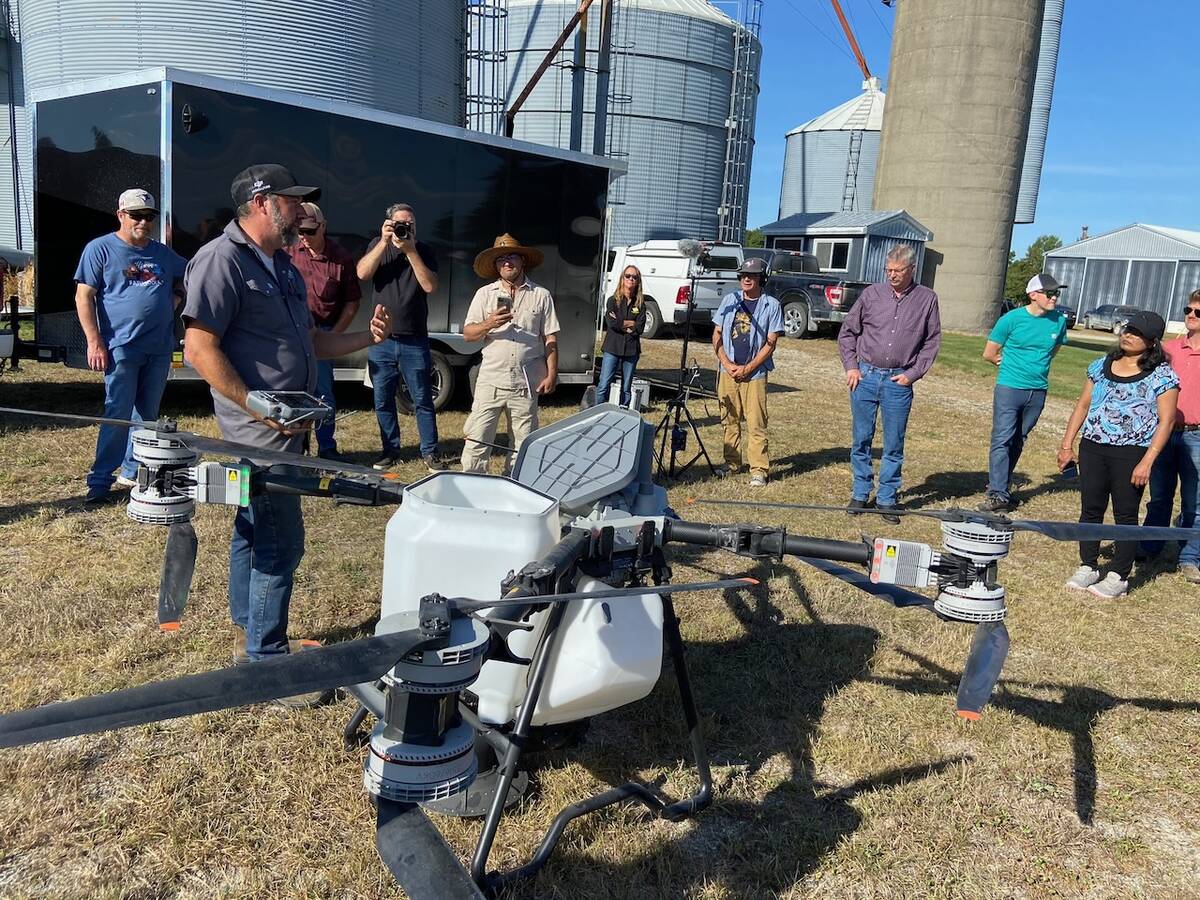* USDA report confirms planting progress despite wet weather
* U.S. soy plantings well behind average pace
* Traders hope drier weather will open window for planting
* Floods stall barge traffic on Mississippi River
(Adds closing prices, details on Mississippi River floods)
By Tom Polansek
CHICAGO, June 4 (Reuters) - Deferred U.S. corn and soybean
futures stumbled on Tuesday as forecasts for a pause in rainy
weather raised expectations that farmers will follow through on
plans for massive plantings.
Traders are keeping a close eye on the weather because cool,
wet conditions have slowed planting so far this spring, fueling
Read Also

Drones jumpstart cover crop planting
Drones are a tool that can help farmers with cover crop planting in still-growing corn and soybeans.
fears that farmers would not plant as many acres as expected.
The latest forecasts "suggest that we're going to catch up
and we're going to get a lot of grain planted," said grain
analyst Tim Hannagan of Walsh Trading.
"The planting window won't open all the way, but it's going
to be about three-fourths open," he said.
Chicago Board of Trade December corn, which represents
the crop that will be harvested this autumn, fell 1.3 percent to
$5.53 a bushel, after losing 1.3 percent on Monday. November
soybeans slipped 0.7 percent to $13.16 a bushel.
The U.S. Department of Agriculture said in a weekly report
on Monday that the U.S. corn crop was 91 percent planted as of
Sunday, up from 86 percent a week earlier but behind the
five-year average of 95 percent. Soybeans were 57 percent
planted, up from 44 percent the previous week but far behind the
five-year average of 74 percent.
"The progress report indicated that the corn is gradually
getting planted, and there looks like a window of opportunity
for producers later this week," said analyst Tomm Pfitzenmaier
of Summit Commodity Brokerage.
"If the weather straightens out after this midweek rain and
allows planting to progress, then the bean price may be as high
as it needs to be for this run," he said.
CROP OUTLOOK
With worries easing about planting, traders are beginning to
shift their focus to how weather will impact the development of
crops.
In its first corn condition ratings of the season, the USDA
on Monday said 63 percent of the crop was good to excellent,
which tied with 2008 for the lowest rating at this time of year
since 2002.
Traders in the market will "keep on removing weather premium
as long as the weather looks good for crop development," said
Brian Hoops, president of Midwest Market Solutions.
Spot July corn rose 0.7 percent to $6.60-1/2 a bushel,
underpinned by tight nearby supplies. July soybeans lost
0.2 percent to $15.28-1/2 a bushel in a setback from gains on
Monday.
GAUGING RAIN
The USDA's state reports on Monday said heavy rains fell in
the last week from North Dakota to Indiana, with some areas
receiving 6 inches (15 cm) in the week. Deadly tornadoes and
flooding struck in Oklahoma.
The precipitation eased drought conditions in parts of the
southern Plains winter wheat belt. The USDA said 32 percent of
the U.S. winter wheat crop was rated good to excellent, up 1
percentage point from the previous week.
July wheat ended near unchanged at $7.09 a bushel.
Heavy rains have stalled barge traffic on a flooded stretch
of the Mississippi River, but relatively few vessels stood
waiting at the channel's system of locks on Tuesday as shippers
had received ample warning of the rising water.
Some 60 percent of all U.S. grain exports is transported via
the Mississippi River and its tributaries from farm areas in the
Midwest to export terminals at the Gulf Coast.
Prices at 2:59 p.m. CDT (1959 GMT)
LAST NET PCT YTD
CHG CHG CHG
CBOT corn 660.50 4.75 0.7% -5.4%
CBOT soy 1528.75 -3.75 -0.2% 7.8%
CBOT meal 452.50 -1.90 -0.4% 7.6%
CBOT soyoil 48.59 -0.07 -0.1% -1.2%
CBOT wheat 709.00 0.25 0.0% -8.9%
CBOT rice 1552.00 6.00 0.4% 4.4%
EU wheat 207.50 -0.25 -0.1% -17.1%
US crude 93.50 0.05 0.1% 1.8%
Dow Jones 15,179 -75 -0.5% 15.8%
Gold 1398.80 -12.30 -0.9% -16.5%
Euro/dollar 1.3081 0.0007 0.0% -0.9%
Dollar Index 82.7520 0.0960 0.1% 3.7%
Baltic Freight 805 -1 -0.1% 15.2%
(Editing by Lisa Von Ahn, James Dalgleish and Jim Marshall)















